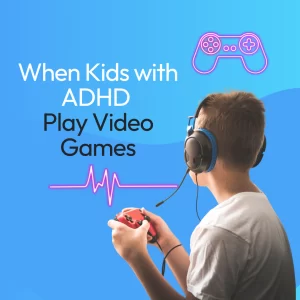Thoughts and words are Fused together
Fusion is when our thoughts entangle with our perception more than our immediate experience in the world. Throughout the day, all kinds of thoughts ‘Pop!’ into our heads. Sometimes these thoughts are pleasant. Sometimes they are not. These thoughts can be associated with things that are happening around us in any given moment. Sometimes these thoughts are associated only with what is going on inside of us. But they are always associated with words (we would not to know what to make of them if they were not!). Our recent post on Psychological Flexibility talked about the difficulty that is presented when we attempt to control the thoughts that ‘Pop!’ into our heads. That we are, more likely than not, going to end up giving those thoughts even more ability to be disruptive.
The goal of being flexible is not to eliminate troublesome thoughts or attempt to control the ones that ‘Pop!’ up in order to reduce one’s suffering. The goal is to use those troublesome thoughts to establish your values, grow as a person, and pursue meaning. Sometimes we can become “fused” with our thoughts and we find it difficult to separate our experience in the world, from that experience we have with our thoughts about the world. Said another way, because we associate everything in the world with language sometimes the words we use to think about the world end up influencing our behavior even more than the actual world around us.
Can we step back and look at our thoughts?
There are all kinds of instances where we fuse with unhelpful thoughts. How quickly does making a mistake in our lives translate into that classic thought “I’m so stupid.” How about being called to the office, or having a teacher ask to speak to you after class? I remember all kinds of thoughts welling up when I was young and got a request like that. Well, these types of ideas are the kinds that we internalize over time and can tend to be a very sticky things that we end up fused to. The technique of defusion is one that encourages us to step back, and look at our thoughts, instead of looking at the world from the perspective of our thoughts. After all, we can not simply control or eliminate our thoughts.
This is why it is critical to pull the words away from their meaning. Particularly if those words are not helpful. In the example of a person making a small mistake and immediately having the thought “I am stupid” ‘Pop!’ into their head (we have all been there), we can first simply start by acknowledging the fact that I am having the thought that “I am stupid”as a result of something that happened outside of my head. This moves us one layer away from being fused to an otherwise unhelpful thought and gives us a little space between ourselves and the thought.
Diffusion from the words we tie to the world
Being called down to the office often results in feelings of stress and anxiety. It can force us into a situation where we are rehearsing for ourselves a situation where we believe that the only reason that we would be called to the office is if we were in trouble. Therefore, the reason that we are being called to the office IS that we ARE in trouble. Again, something happens and it spotlights an area where we are fused to our thoughts. Defusion is the process of stepping away from those thoughts and giving yourself room to breathe. So, instead of fusing to the thought “I am being called to the office so I must be in trouble,” remind yourself that “I am having the thought that I am going to be in trouble because I was called to the office,” and see that although there is anxiety in both statements, in the second you have a little bit of space between your thoughts.
This step allows you to evaluate your choices more objectively, and take action. So, if you have been asked to stay after class by a teacher and you feel your heart beating fast and your palms getting sweaty, the first step might be to say to yourself ‘I am noticing that I am feeling very anxious at this request’ and then resist the powerful drive to avoid the feelings of this thing that is creating worry. giving you the chance to slow down your thinking. Recognize that you just did very well on the last test. And consider that the teacher may want to ask that you help others who may be struggling with the material; or that the teacher had some ideas about a project that they knew you were working on and is excited to talk to you about them!
Fusing to thoughts that affect our behavior
Let’s think about another example: when I was a kid I was a competitive swimmer. I started swimming when I was 6 years old, and I swam all the way through college at the University of Utah. At different points in the year local, regional, and national level competitions would be scheduled, and it was usually the case that within any 6-month period of time, I was preparing for a “big-race.” I was training long hours, and putting lots of pressure on myself to do well. Before college I was really trying to ensure that I could earn a scholarship to University, and in college I really wanted to keep my scholarship and do the best I can for the team to qualify for bigger races.
On any given week I could gauge my performance relative to a strict schedule that was put together to track my progress (this was a schedule that I put together with the coaches at the beginning of every season as a way to ensure that we could meet our goals). Suppose that I am becoming increasingly nervous about how I will perform on the day of the “big-race,” and I start visualizing myself ‘choking.’ I might imagine my teammates being disappointed in me. I might think about having a tough conversation with my coaches after a disappointing result. In fact, just thinking about what my coach might say in response to falling short of our goals caused me to panic. Raising my concerns about failure even further. In some sense, I seem to have stumbled on this treasure trove of anxiety that starts to identify the big race as a negative one, even though we are still weeks away.
Acceptance v. Avoidance
In a state where I am fused to my thoughts, the thought of the disappointment, panic, and sadness associated with all of the preparation I had been doing not providing the result that I expected would become the focus of my anxiety. Not the big race itself. Notice, in this example, that I am weeks away from the big race. In fact, I may never have been to a competition like this before. Yet, because of fusion, many of the verbal tools that I use to describe my feelings about the big race have brought the anxiety of the performance that is months away, right to my door step. Today. And without having even been to the big-race, I am already experiencing the feelings of panic and anxiety that are tied to my perceived failure.
At this point, I have the option of Experiential Avoidance, or the idea that moving toward something of value often will bring up feelings that are not positive (e.g., think about the goal of going to college versus the stress of taking the SATs). Avoidance causes people to not attempt things that are difficult for fear of failure. Defusing from thoughts and simply try to notice feeling anxious about the big race gives me a bit of space. Separating me from the anxiety, and giving me a chance to make a plan and keep moving towards my goals and values. Remember, the goal of defusion is to get your arms around the language we use so that it does not control us (become fused to our actions), and we can manage difficulty on our way to living out our values and chasing after meaning in our lives!




1 thought on “Fusion: Can our words influence our reality?”
Pingback: Who am I? Exploring our Self - Stand 4 Kind - Fusion - Mindfulness